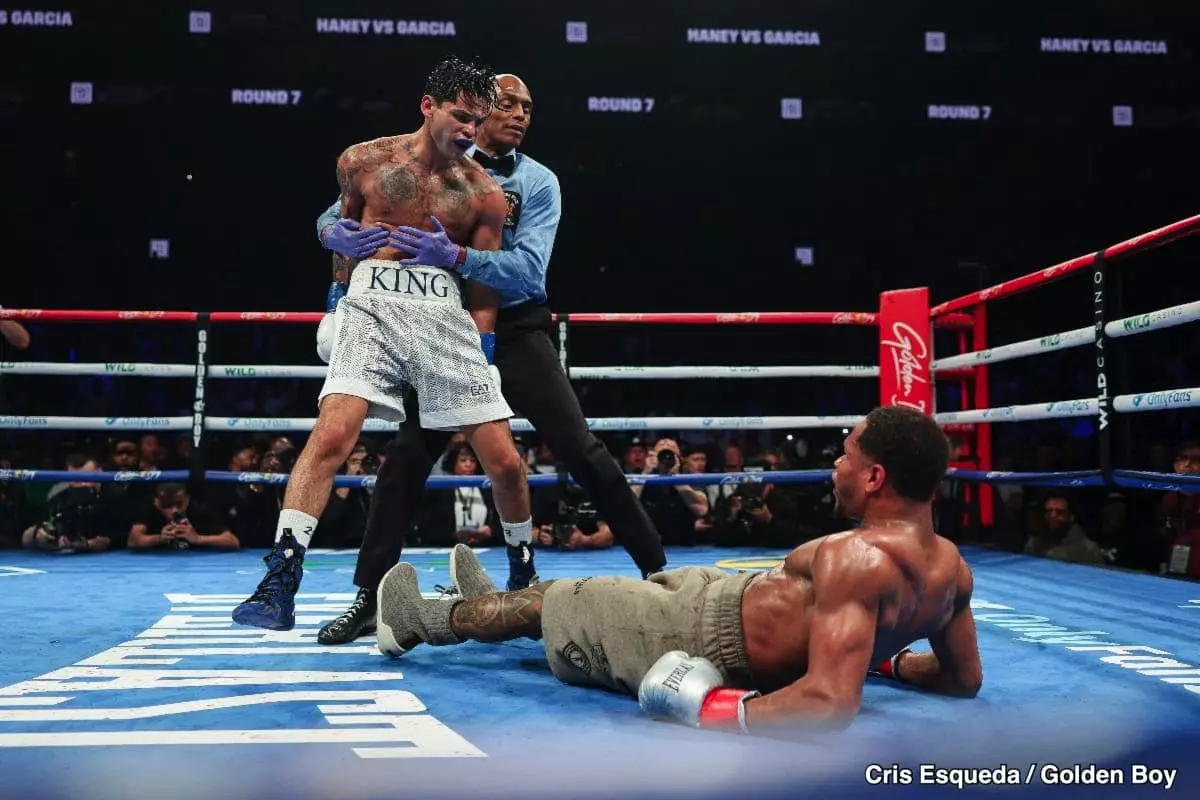Devin Haney, the undefeated boxing champion, is at a crossroads in his career. With a record of 31 wins and 15 knockouts, Haney’s journey in the ring has been impressive. However, after his recent performance against Ryan Garcia, where he faced a crushing defeat, many experts and former champions, including Regis Prograis, are questioning whether Haney should immediately pursue a rematch with Garcia or take a step back first. Prograis, a two-time light welterweight champion, has voiced strong opinions on this matter, emphasizing the importance of recalibrating Haney’s approach due to the psychological and technical implications of his last fight.
Prograis argues that Haney should not rush into a rematch with Garcia, as his last bout left him scarred—both physically and mentally. The April 20th encounter saw Haney knocked down three times, leading to a clearer realization that he was outmatched. A rematch, in Prograis’s eyes, could result in another defeat for Haney, compounding the psychological toll of his first loss. The solution, as he suggests, could be a tune-up fight—an opportunity for Haney to regain some much-needed confidence before stepping into the ring with a fighter like Garcia again.
The need for a tune-up stems not only from Haney’s obvious physical setbacks but also from the mental weight he carries following his defeat. In boxing, confidence is as crucial as technique. Haney’s decision to refrain from competitive fights over the past year may be driven by a fear of further losses, particularly against someone who has already bested him. The expectation, thus, is that a more manageable opponent could help rekindle his self-belief and refine his skills before diving back into high-stakes matchups, where the pressure to perform is overwhelming.
Financial Incentives vs. Career Advancement
While some argue for taking a safer route, the allure of a rematch with Garcia is undeniable from a financial perspective. Prograis highlights this dichotomy, noting that the potential monetary rewards could overshadow the risks involved. A rematch with Garcia could mean significant earnings for Haney, something that is often hard to resist in the world of professional sports, especially for a fighter looking to maximize their income.
Moreover, Haney’s standing as a boxer hasn’t yet reached the pay-per-view status enjoyed by figures like Gervonta Davis, limiting his options for “stay-busy” fights that could yield substantial earnings. The prospect of facing a less formidable opponent may not attract the same financial compensation, leading Haney’s camp to consider the rematch with Garcia a more lucrative option—despite the risks to his career trajectory. However, Prograis suggests that financial gain shouldn’t solely dictate Haney’s fighting strategy, as the long-term implications of repeated losses could tarnish his legacy.
Regis Prograis’s analysis also touches upon the haunting nature of a fighter’s psychological state post-defeat. Haney’s mind will undoubtedly replay the moments of humiliation—knocked down multiple times and ultimately dominated by an opponent he needs to face again. Such memories can create a paralyzing effect, provoking fear and uncertainty. Even if one were to discount the physical capabilities of a fighter, a compromised mindset could derail an otherwise capable athlete. Prograis articulates that no matter how many positive affirmations Haney and his camp might put forth, the ghost of that loss looms large.
By suggesting a tune-up fight, Prograis is promoting a more cautious, calculated approach to Haney’s career moving forward. The idea is to face a less daunting challenge, allowing Haney to build momentum, confidence, and perhaps redefine his boxing style before tackling Garcia once more. Through this process, Haney stands to not only reclaim his position but also fortify himself mentally, setting the stage for a more level playing field should a rematch occur.
As Haney’s career unfolds, he must balance the intricacies of ambition, financial opportunity, and self-preservation. The choices ahead hold significant weight—not only for his immediate finances but for the trajectory of a career that has the potential to dazzle boxing fans worldwide. Prospective opponents like Richardson Hitchins, Teofimo Lopez, or Shakur Stevenson could provide the stepping stones needed to restore Haney’s confidence, bridging the gap between a contentious past and a hopeful future. Ultimately, the decision lies in the hands of Haney and his team. They must carefully weigh risk against reward as they navigate the complex landscape of professional boxing.

